Physical Address
304 North Cardinal St.
Dorchester Center, MA 02124
Physical Address
304 North Cardinal St.
Dorchester Center, MA 02124
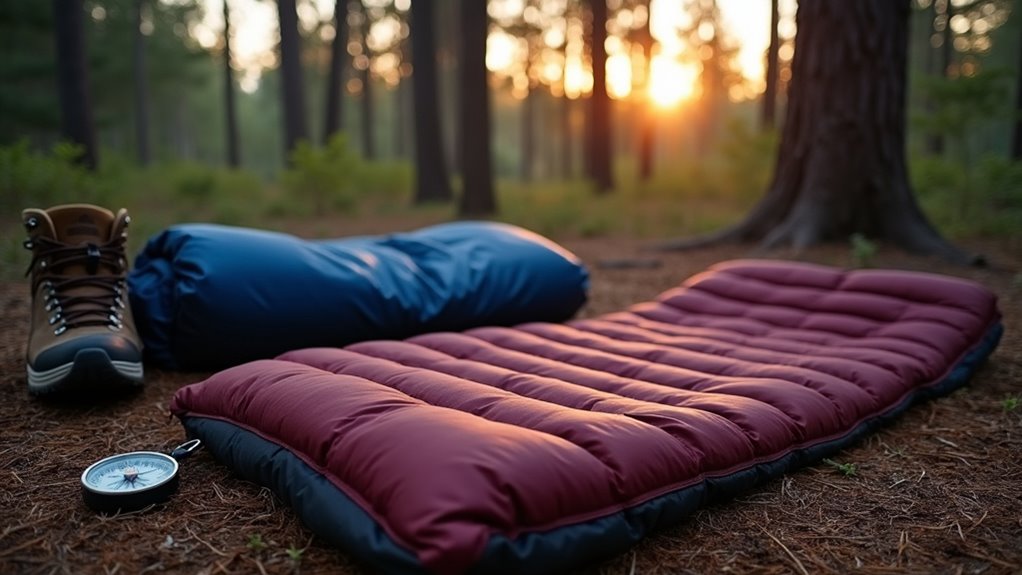
Seasoned campers know the secret to wilderness comfort, but choosing the right sleeping pad requires understanding these crucial features.
When you’ve spent a less-than-stellar night tossing and turning on the hard ground, you’ll quickly understand why seasoned campers prioritize their sleeping pad selection. You don’t need to break the bank to find the right camping pad, but you do need to know what you’re looking for. Whether you’re a weekend warrior or planning extended backcountry trips, choosing the proper sleeping pad can make the difference between waking up refreshed or feeling like you’ve gone ten rounds with a grizzly.
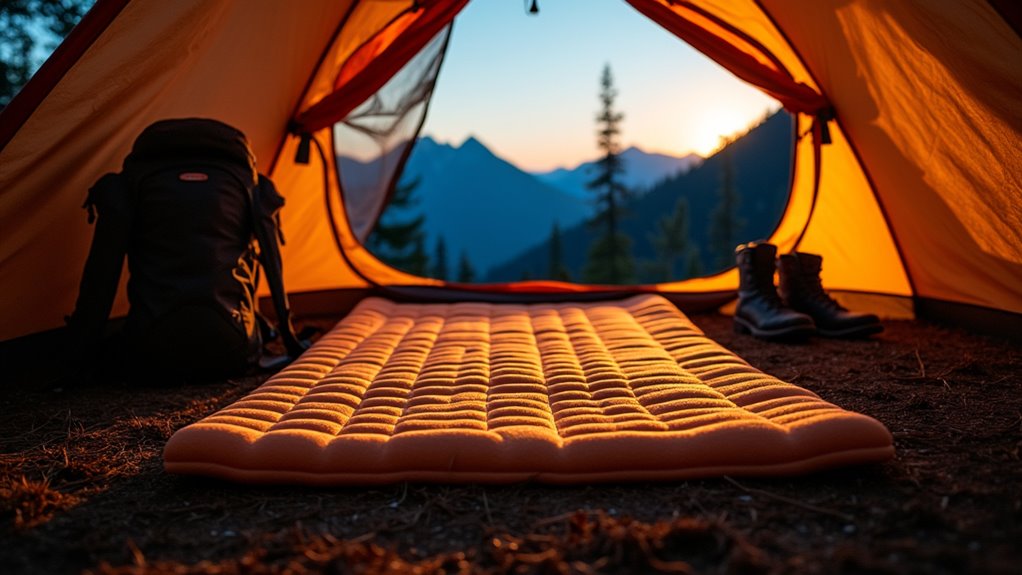
While many campers focus primarily on their sleeping bag choice, your sleeping pad selection can make or break your outdoor sleeping experience. Your pad serves two vital functions: insulation from the cold ground and cushioning for comfort. With inflatable pads dominating the camping sleeping pad market due to their superior comfort and insulation properties, more campers are moving away from basic foam options.
Without proper insulation, you’ll lose body heat quickly, leading to a restless night and potential safety risks. The pad’s R-value indicates its ability to retain warmth – the higher the value, the better the insulation. Choosing the right sleeping bag can also help retain body heat and improve your overall sleeping experience.
Adequate cushioning isn’t just about comfort; it’s essential for your health and recovery. A well-chosen pad prevents pressure points, reduces joint pain, and protects you from uneven terrain. It’ll help you wake up refreshed instead of stiff and sore. You’ll also conserve energy throughout your trip, as quality sleep improves your physical performance and mental alertness.
When selecting a sleeping pad for camping, you’ll encounter four main types: air pads, self-inflating pads, closed-cell foam pads, and insulated pads.
Air pads are your lightest and most compact option, packing down to the size of a water bottle. While they offer excellent thickness for comfort, they’re vulnerable to punctures, so pack a patch kit. These pads typically work best with textured surfaces to prevent sliding during sleep.
Air pads offer unmatched portability and comfort for backpacking, but their delicate nature means always carrying repair supplies just in case.
Self-inflating pads combine air and foam for reliable insulation and comfort, though they’re bulkier than air pads. If you’re on a budget, closed-cell foam pads are virtually indestructible and won’t deflate, but they’re less comfortable and harder to pack. Top Camping Mats can provide additional options to consider for your outdoor adventures.
For cold weather camping, consider insulated pads with bonded insulation or specialized designs like the Therm-a-Rest XTherm NXT. Many feature advanced baffle designs to reduce pressure points and minimize noise while you sleep.
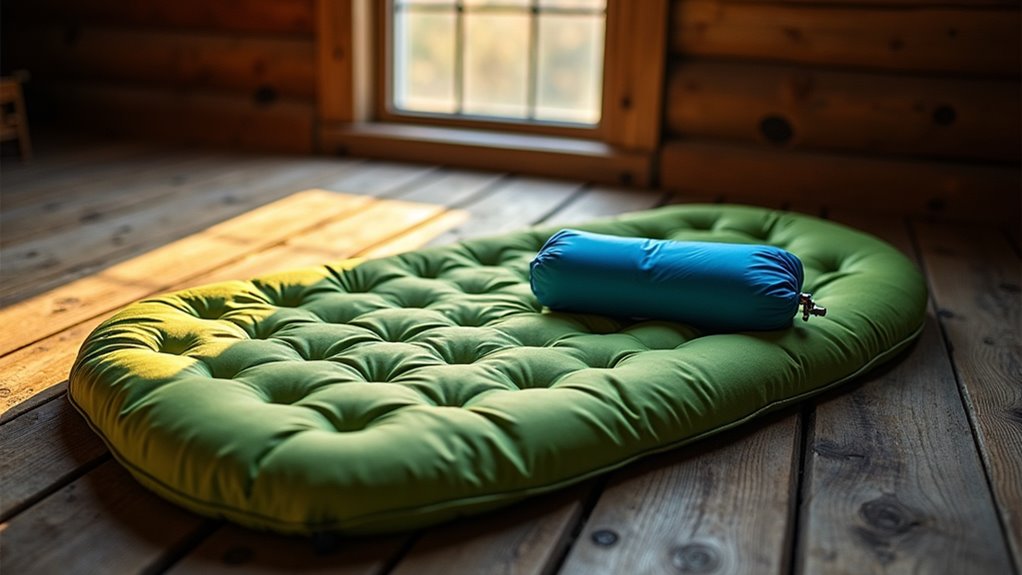
Understanding the key features of sleeping pads will help you make a smart investment for your outdoor adventures. When shopping, you should aim to focus on essential characteristics that match your specific camping needs and sleeping style.
Balance your needs with your budget.
Choosing the right sleeping pad depends heavily on your specific outdoor activities and camping style.
If you’re car camping, opt for thicker self-inflating pads like the Therm-a-Rest Trail Lite that prioritize comfort. For backpacking, you’ll want ultralight air pads that won’t weigh down your pack. Premium options like the NEMO Tensor Elite offer exceptional ultralight performance.
Thru-hikers should consider closed-cell foam pads like the Z Lite Sol – they’re durable, reliable, and won’t deflate on long journeys. Essential gear for your next camping adventure should include a sleeping pad that matches your activity level.
Winter camping demands high R-value insulated air pads to protect you from the cold ground. If you’re into kayak or canoe touring, look for pads that balance compactness with warmth.
Remember that your budget matters too. Closed-cell foam pads are typically less expensive while offering dependable performance, making them a practical choice for cost-conscious adventurers.
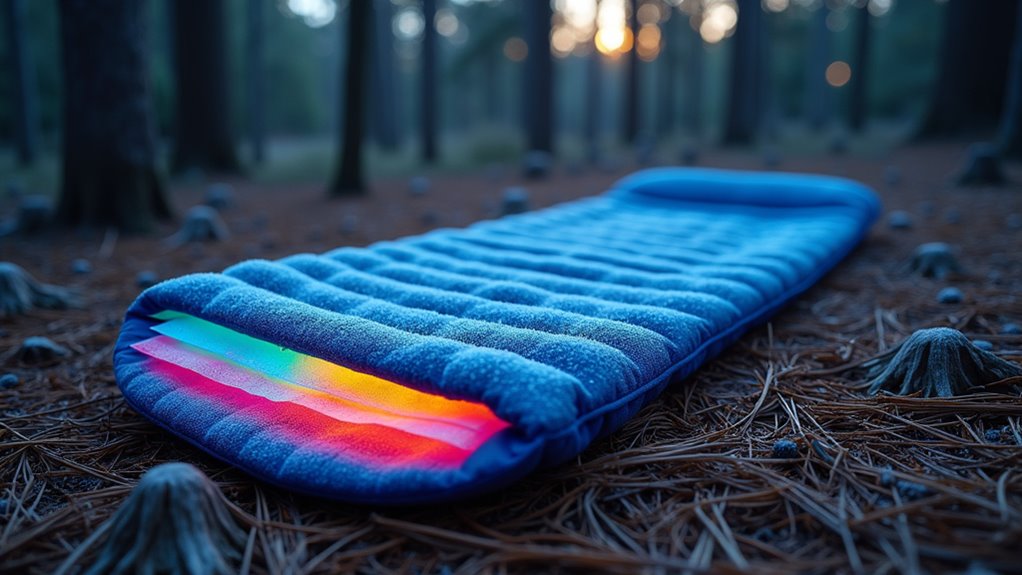
While choosing the right camping gear involves many factors, a sleeping pad’s R-value distinguishes itself as a key metric that can make or break your outdoor experience.
This standardized measurement tells you exactly how well your pad will insulate you from the cold ground beneath. Until 2020, there was no standardized testing method, making it difficult to compare R-value ratings between brands.
Three essential practices will keep your sleeping pad performing at its best: proper site selection, regular cleaning, and careful storage.
Before setting up camp, inspect the ground thoroughly for sharp objects like rocks, twigs, and thistles that could puncture your pad. Use a groundsheet or tent footprint as an extra barrier. Choosing the right camping air bed can also help protect your pad from damage.
When cleaning, wipe down your pad with lukewarm soapy water and a soft cloth, making sure the valves are tightly closed. Clean any insect repellent spills immediately to prevent damage to synthetic materials.
Store your pad uncompressed in a cool, dry place away from direct sunlight. If you’ve got a self-inflating pad, keep it unrolled to preserve the foam.
Don’t overinflate, as this can cause damage, and always test for leaks before heading out. For extra protection, consider using a pump sack instead of breath inflation, and keep pets’ claws away from your pad.
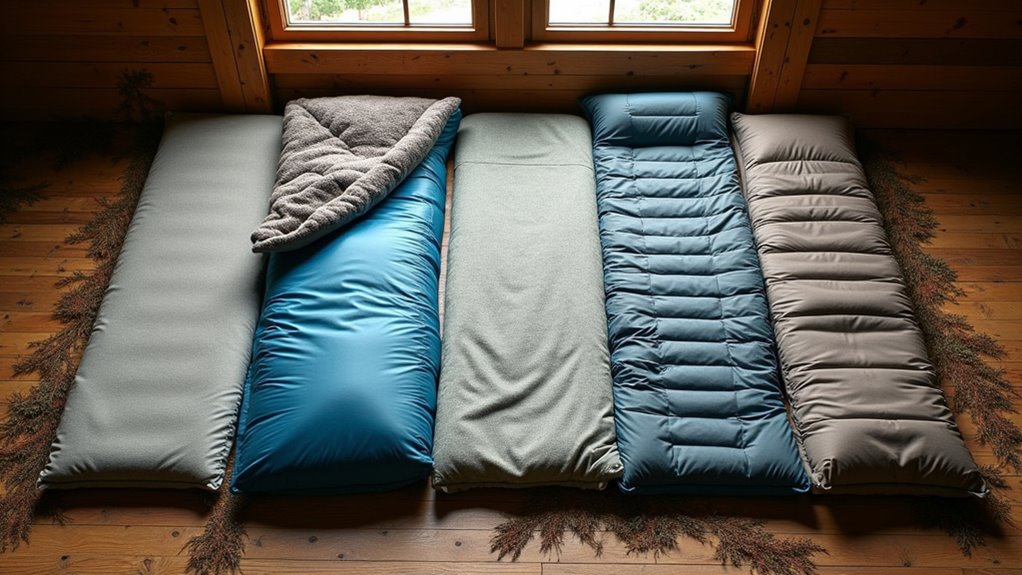
Finding the perfect sleeping pad doesn’t have to break the bank, with quality options available from $150 to $240.
Whether you’re a casual camper or serious backpacker, there’s a pad that matches your needs and budget. Experienced campers recommend choosing pads with an R-value above 3 for reliable three-season use.
Once you’ve selected your ideal sleeping pad, maximizing its comfort potential requires some savvy techniques and insider knowledge. Start by testing your sleeping position at home – if you’re a side sleeper, you’ll want extra cushioning around your hips and shoulders. Don’t forget to check your pad’s R-value matches your camping conditions.
For the best insulation, pair your pad with a compatible sleeping bag and consider adding a lightweight foam liner underneath for extra warmth. Modern sleeping pads with dual valves make inflation and deflation much easier than traditional designs. When selecting a sleeping pad, consider one with a high R-value for better insulation in colder weather.
When setting up camp, clear the ground of rocks and debris, and look for a slightly elevated spot to prevent water pooling. You can boost comfort by wearing appropriate sleep layers and using your backpack as a pillow. Remember to fully inflate air pads but avoid over-inflation, which can create pressure points.
Don’t let your outdoor adventure turn into a sleepless nightmare. You’ll make the right sleeping pad choice when you match your camping style with proper R-values, durability, and comfort features. Whether you’re a budget-conscious backpacker or comfort-seeking car camper, there’s a perfect pad waiting for you. Remember, your sleep system’s foundation can make or break your wilderness experience – choose wisely, and you’ll wake up ready for whatever nature throws your way.